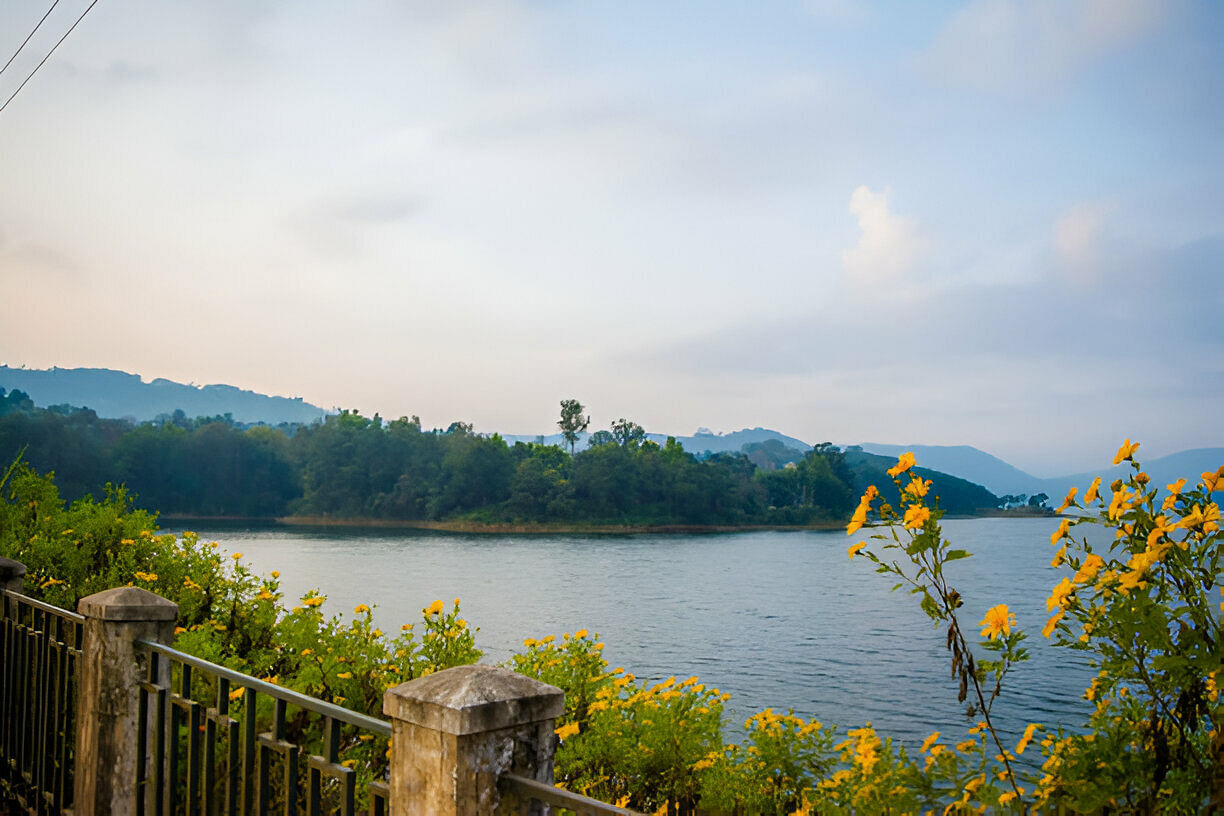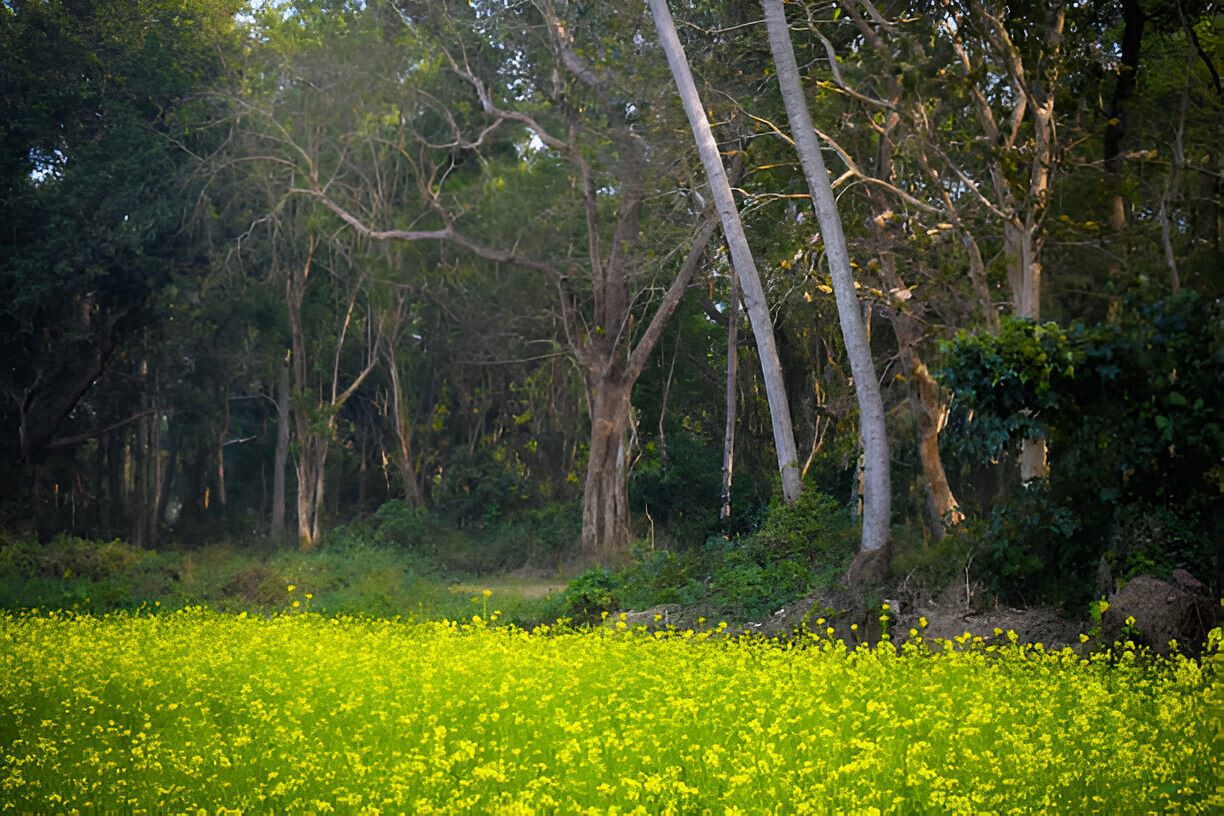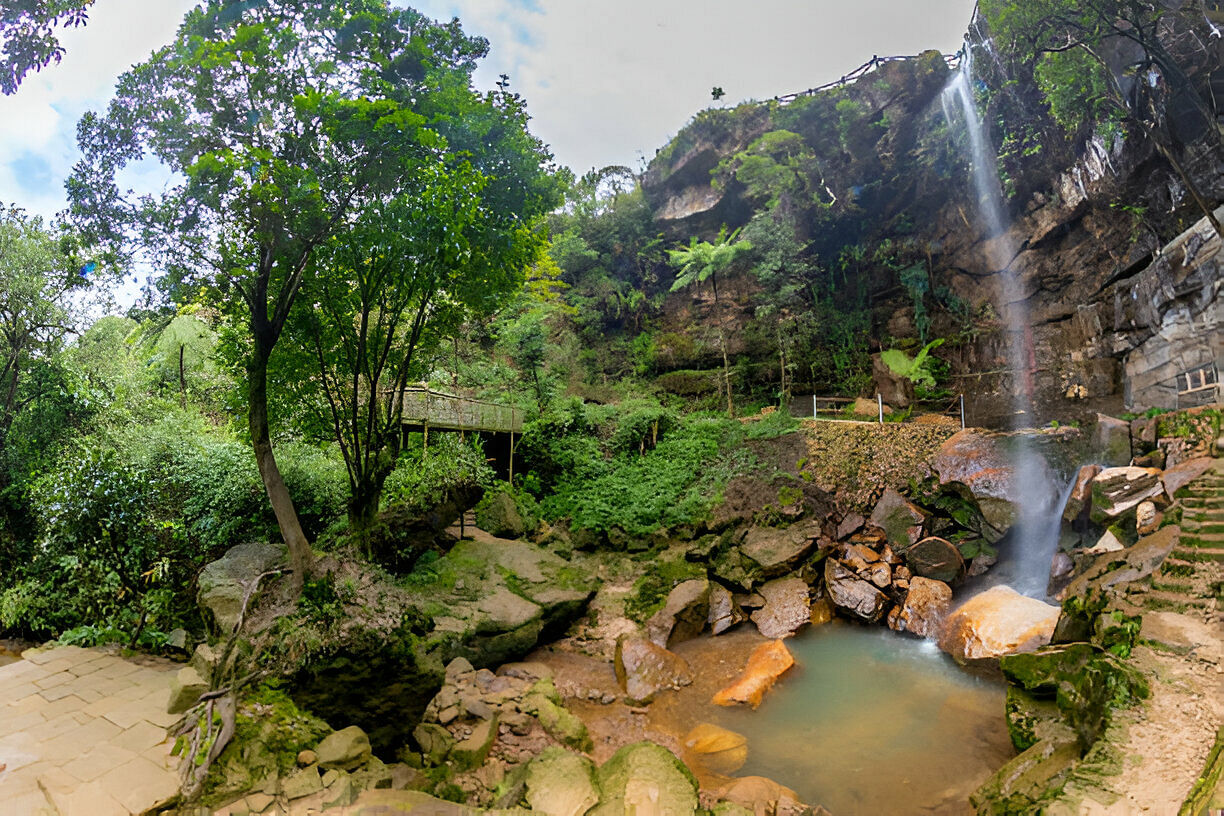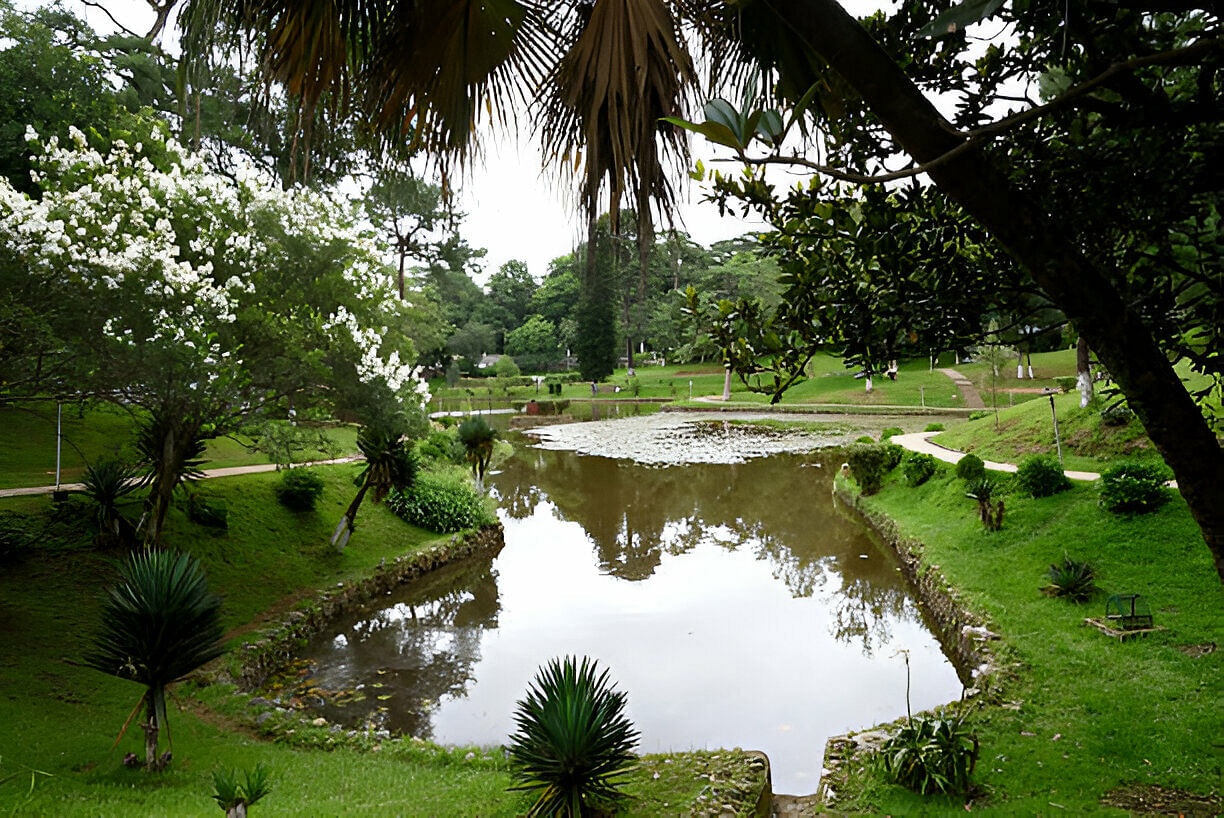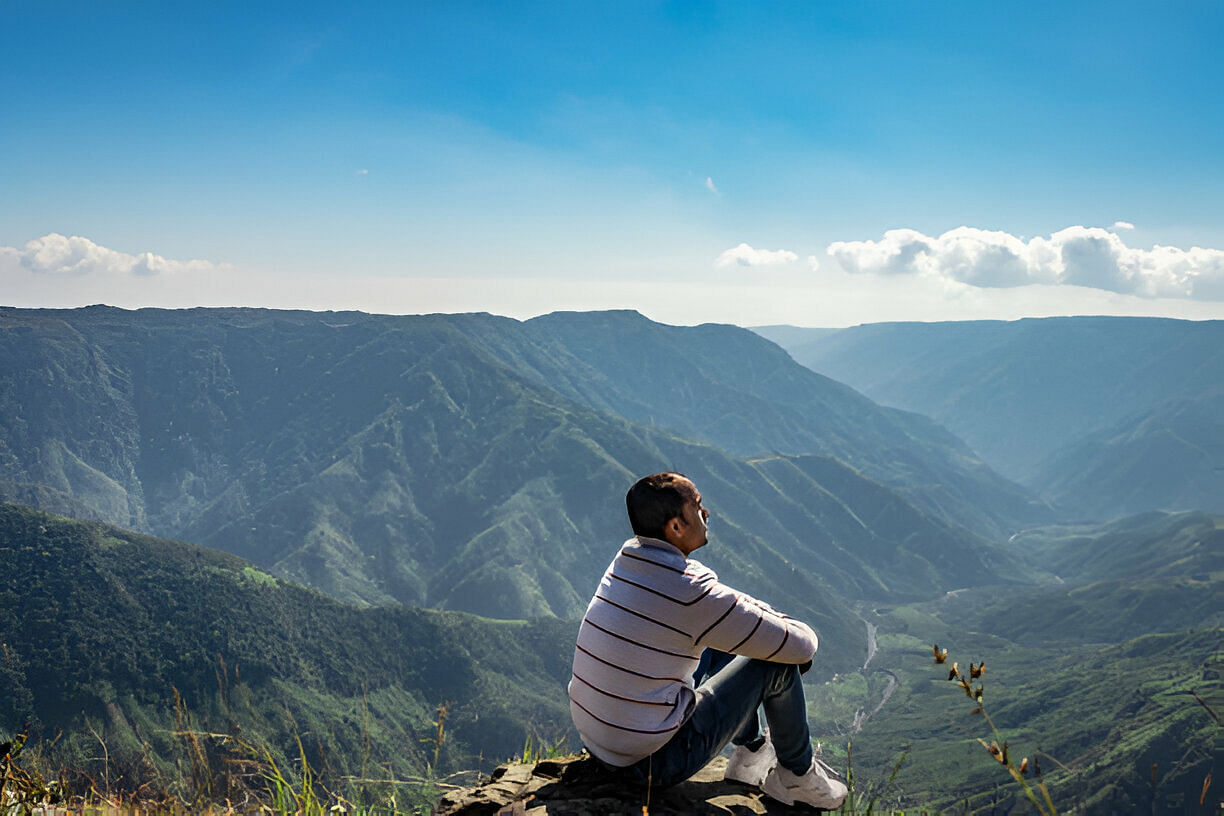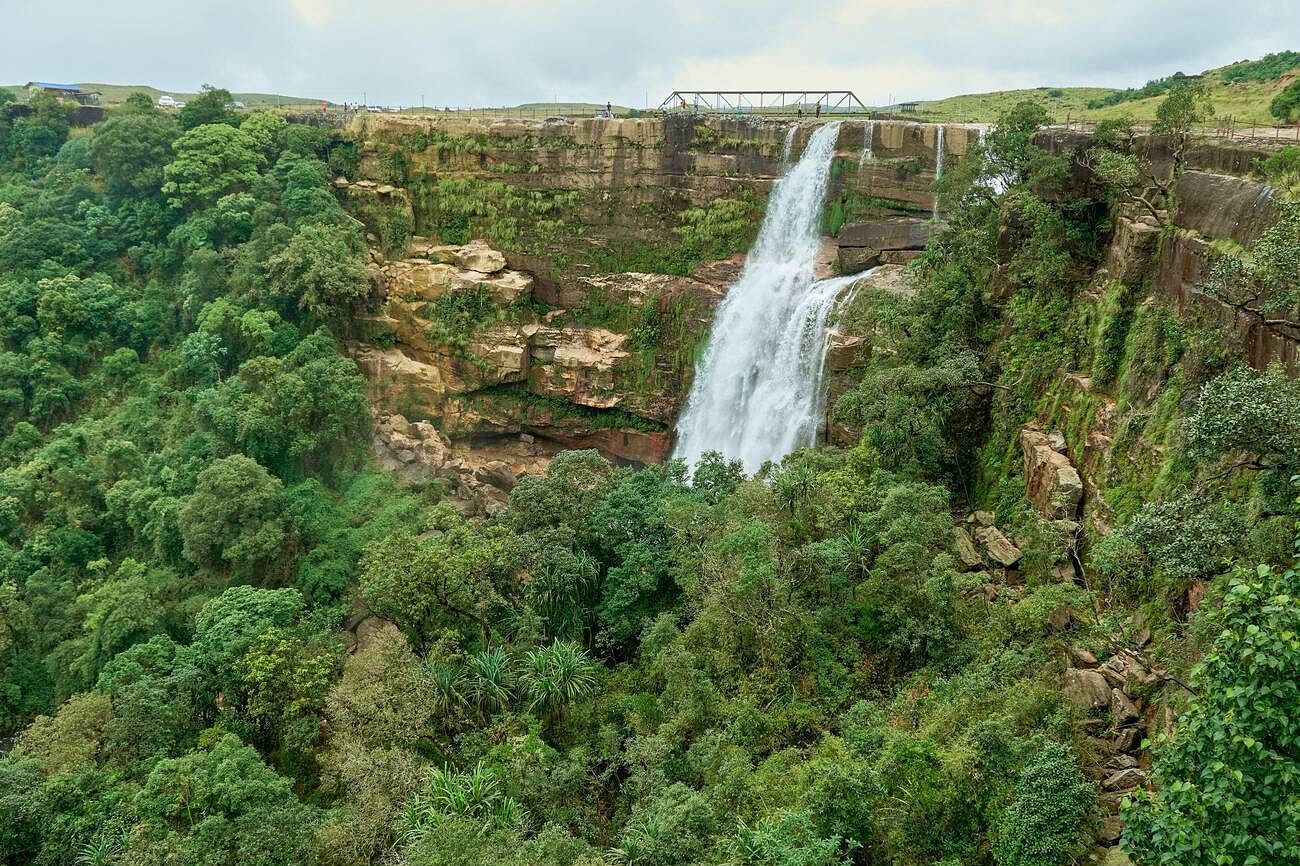Planning a trip to Meghalaya Planning a trip to Meghalaya and wondering when the magic truly unfolds? Welcome to the Abode of Clouds, where the weather here plays the biggest role in how your trip turns out!
Peak season is from March to June with pleasant weather ideal for sightseeing, treks, and popular attractions. Shoulder season runs from October to February, bringing cooler temperatures, clear skies, and a calm travel vibe with cultural festivals. Off season falls between July and September, when heavy rainfall boosts waterfall beauty but can cause travel delays and accessibility issues.
So before you zip that suitcase, let’s unlock the best time to visit Meghalaya for your style of travel. Ready to plan a trip that feels like a dream you get to live? Let’s jump in.
popular meghalaya holiday packages
Peak Season (March to June)
Peak season spans spring to early summer in Meghalaya, offering the most reliable and traveler-friendly weather. Temperatures typically range between 15°C to 25°C in Shillong and 18°C to 28°C in low-lying areas like Dawki. Days are bright and pleasant, humidity is moderate, and visibility is excellent, which means more time outdoors and fewer travel disruptions.
Best Things to Do in Meghalaya in Peak Season
- Living Root Bridges Treks: Ideal months for trekking to Nongriat Double Decker, Riwai, and other root bridges since paths remain dry and safe.
- Boating in Dawki’s Umngot River: This is when the river is at its clearest, allowing you to literally see the riverbed beneath your boat.
- Cave Exploration: Top caves like Mawsmai, Arwah, and Siju are fully accessible because there is minimal flooding.
- Waterfall Chasing: Nohkalikai, Seven Sisters, Dainthlen, and Krang Suri still flow beautifully from monsoon reserves.
- Adventure Activities: Ziplining, camping, rock climbing, and hiking trails like the David Scott trail run smoothly this time.
- City Attractions: Shillong’s cafes, markets, and viewpoints are more enjoyable with better mobility and daylight hours.
Weather Advantages
- Low rainfall means fewer delays and clear road conditions
- Stunning sunrise and sunset views, especially from Laitlum Canyon
- Wildlife sightings possible in Balpakram National Park during late spring
Events and Festivals
- Shad Suk Mynsiem Festival (April in Shillong and Khasi hills)
- Celebrates thanksgiving and Khasi heritage with traditional dances and costumes, making April the best month to visit Meghalaya.
What to Pack
- Light woolens for cooler evenings, especially in higher altitudes
- Comfortable trekking shoes with good grip
- Sunglasses, sunscreen, and light summer clothing
- A small first-aid kit and hydration gear for hikes
Things to Keep in Mind
- Higher demand leads to busy tourist spots and premium pricing
- Book hotels, cabs, and activities 2–3 weeks in advance
- Weekends in Shillong may get crowded
Shoulder Season (October to February)
Shoulder season covers autumn and winter in Meghalaya, turning the state calm, crisp, and even more scenic. Temperatures range between 4°C to 16°C in Shillong and 10°C to 20°C in lower valleys. Rainfall is minimal during these months, skies are clear, and visibility is excellent, creating perfect views for photographers and nature lovers.
Best Things to Do in Meghalaya in Shoulder Season
- Serene Sightseeing: Clear skies highlight iconic spots like Laitlum Canyon, Shillong Peak, and Ward’s Lake with stunning views.
- Winter Landscapes: The hills turn misty and romantic, perfect for nature walks and peaceful getaways.
- Festivals and Cultural Experiences: Enjoy the Wangala Festival of the Garo tribe (Nov), music events, and Christmas celebrations in Shillong.
- Camping and Star Gazing: Night skies are incredibly clear near Shnongpdeng and Mawphanlur.
- Offbeat Exploration: Rural villages and sacred forests are more accessible with less rainfall.
Weather Advantages
- Excellent sky visibility for panoramic viewpoints
- Cooler conditions reduce travel fatigue
- Ideal time for heritage and nightlife experiences in Shillong
Popular Festivals and Events
- Wangala Festival (Nov, Garo Hills): A grand harvest celebration with a 100-drums performance makes November the best month to visit Meghalaya to witness the culture.
- Shillong Autumn Festival (Oct–Nov): Music, fun activities, and riverside events
- Christmas & New Year (Dec): Shillong lights up with beautiful decorations and choirs
What to Pack
- Warm jackets and thermals for night temperatures
- Comfortable shoes for walking on chilly mornings
- Moisturizers and lip care due to dry winter air
- Reusable water bottle and hand warmers for higher altitudes
Things to Keep in Mind
- Nights can drop to near freezing, especially in higher regions
- Some waterfalls reduce in volume during peak winter
- Book festive season stays early due to Christmas–New Year rush in Shillong
Off Season (July to September)
Off season in Meghalaya comes with the peak monsoon, turning the state into a lush green world of clouds and roaring waterfalls. Temperatures remain comfortable between 18°C to 22°C, although constant showers are expected.
While this is when nature is at its most intense and breathtaking, especially in famous rain zones like Cherrapunji and Mawsynram, travelers must be aware of risks such as landslides, slippery trekking paths, flooded caves, and occasional roadblocks that can disrupt travel plans.
Best Things to Do in Meghalaya in Off Season
- Waterfall Watching at Peak Power: Nohkalikai, Seven Sisters, Krang Suri Falls, and countless seasonal falls become majestic and thunderous.
- Cloudscapes and Rain Forest Trails: Misty viewpoints and jungle treks feel straight out of a movie.
- Photography and Slow Travel: Moody skies, saturated colors, and fewer crowds offer unique frames.
- Budget Travel: Stay, food, and activities become more affordable due to low tourist rush.
Weather Characteristics
- Frequent and heavy rainfall
- Landslides and roadblocks possible in steep terrain
- Humidity remains high across the hills
- Water levels in rivers rise, impacting boating and adventure sports
What to Pack
- High-quality raincoat or poncho
- Waterproof trekking shoes with strong grip
- Quick-dry clothing and backpack rain cover
- Mosquito repellent and essentials for damp weather
- Travel buffer days for itinerary changes
Things to Keep in Mind
- Some treks and caves may remain closed due to safety concerns
- Boat rides in Dawki are often suspended during peak rains
- Always check weather forecasts before long drives
- Keep cash handy since network outages may occur in remote regions
Best Season to Visit Meghalaya
Meghalaya in Summer is the most popular time for travelers to explore the state thanks to its pleasant weather and clear skies. Temperatures usually stay between 15°C to 25°C, which makes long sightseeing days comfortable and enjoyable. You can visit the major attractions in Meghalaya without worrying about sudden heavy rainfall.
Summer brings the perfect conditions for exploring the living root bridges, trekking through lush trails, boating in Dawki’s crystal-clear Umngot River, and witnessing waterfalls in great flow. Shillong and Cherrapunji remain cool compared to most of India during these months, making Meghalaya in Summer a refreshing escape from the heat.
Since this is the peak tourist period, hotel prices are higher and attractions tend to be a bit crowded. It is best to book stays and transport in advance. For a complete, hassle-free trip filled with adventure and scenic beauty, Meghalaya in Summer truly delivers the classic experience.
Meghalaya in Monsoon turns the entire state into a rainforest scene. Clouds brush past your face, hills shine in deep green, and waterfalls roar louder than ever. If you enjoy nature in its wildest form, this season will feel magical. The famous rain belts around Cherrapunji and Mawsynram show why Meghalaya holds rainfall records.
Travel does get a bit adventurous. Slippery paths, occasional landslides, and sudden showers can change your plans without warning, so flexible itineraries work best. Still, the payoff is incredible views, moody photography, and peaceful spots without tourist rush.
With budget-friendly stays and monsoon romance in the air, Meghalaya in Monsoon is ideal for travelers who love slow travel, scenic drives, and weather that keeps you guessing. Waterproof shoes and a rain jacket are your best friends when exploring Meghalaya in Monsoon.
Meghalaya in Winter feels like a cozy escape wrapped in misty mornings and starry nights. Temperatures dip to 4°C to 16°C, especially in higher locations like Shillong, so warm layers are essential. The weather stays dry and pleasant, making sightseeing smooth and fatigue-free.
This is when Meghalaya slows down and becomes gentler. Clear views at Laitlum Canyon, peaceful boat rides at Umiam Lake, and cultural celebrations such as the Wangala Festival and Christmas lights in Shillong make the season rich with charm and community vibes.
Fewer rain interruptions mean more time outdoors and easier access to offbeat destinations.
Whether you are a photographer, festival lover, or honeymooner, Meghalaya in Winter is a beautiful mix of calm landscapes and crisp holiday cheer. For anyone dreaming of quiet hills and scenic sunsets, Meghalaya in Winter is a top pick.
When planning a trip to the hills and waterfalls of the Northeast, choosing the right season can make all the difference. After exploring the seasons in detail, it’s clear that the best time to visit Meghalaya depends on the experience you are seeking. March to June offers clear skies, comfortable temperatures, and full access to treks and sightseeing. October to February brings cooler weather, festivals, and peaceful escapes, while July to September is perfect for monsoon lovers seeking lush greenery and dramatic waterfalls, though travel can be challenging.
For travelers looking to plan a smooth, memorable journey, Meghalaya tourism peaks in spring and early summer, but every season has its unique charm. Let WanderOn guide your choices, ensuring that you make the most of Meghalaya’s scenic landscapes, cultural richness, and natural wonders.







